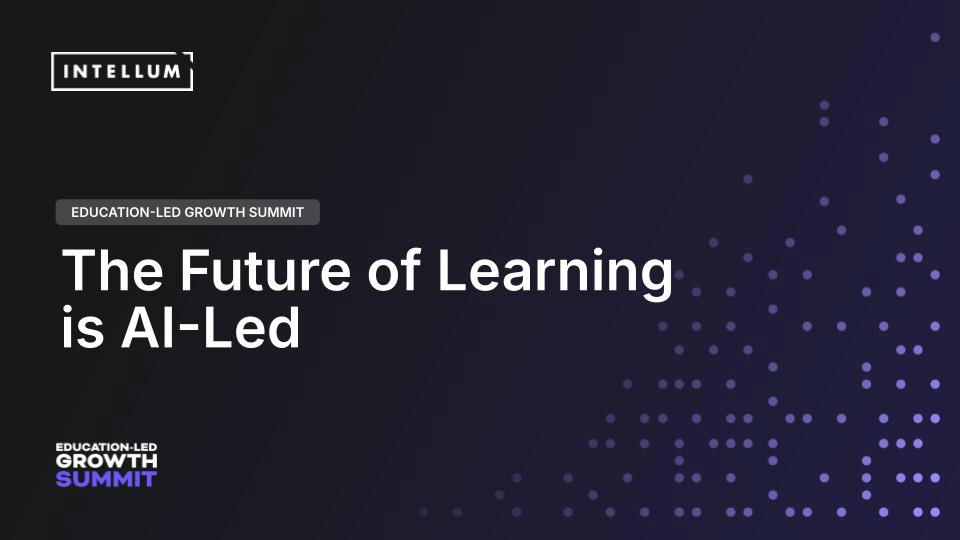Just a few years ago, artificial intelligence (AI) was top of mind for many learning leaders, but a seemingly far-off reality. Now, AI tools are being rapidly adopted to amplify the workforce.
From auto-generated course content to predictive analytics, AI is increasingly woven into the very fabric of modern LMS and EdTech platforms. For learning and development (L&D) professionals, this presents both immense opportunity and critical responsibility.
As enterprise learning shifts from content delivery to skill-based, data-driven experiences, L&D leaders must evaluate AI not just as a tool, but as a transformational force. This means going beyond flashy demos to ask the tough, strategic questions that safeguard learners, align to business outcomes, and future-proof your learning ecosystem.
Here are nine essential questions every education and L&D leader should ask when considering AI in their tech stack:
1. Who owns the data, and how is it protected?
Before you bring any AI tool into your LMS, ask how it handles sensitive learner data. Where is the data stored? Who controls access? Is it used to train external models? These questions aren't just about compliance, they're about trust. Protecting employee or learner information is non-negotiable.
Look for vendors that provide clear answers about data privacy, retention policies, and enterprise-grade security. Ensure you retain ownership of your data and that it won't be used to train models without explicit consent.
2. Can we inspect, explain, and override the AI’s decisions?
Many AI models, especially large language models (LLMs), operate as “black boxes,” making it hard to understand how outputs are generated. This lack of transparency is dangerous in learning environments where decisions affect performance, compliance, and learner confidence.
Demand tools that are inspectable, explainable, and overridable. You should be able to trace recommendations, understand how conclusions are reached, and override any output that doesn’t align with your standards.
3. How well does it integrate with our existing learning ecosystem?
No AI tool should operate in a vacuum. Whether you use a traditional LMS, an LXP, a CRM, or a complex HRIS, your AI solutions should connect seamlessly with your current systems.
Evaluate whether the AI can draw from your existing knowledge base, ingest historical learner data, and plug into tools for communication, analytics, and content creation. Without this integration, even the most powerful AI risks becoming another siloed platform that creates more problems than it solves.
4. How will this impact learner experience and outcomes?
AI should enhance—not complicate—the learner journey. Does it personalize content based on learner behavior? Does it reduce friction or overwhelm learners with irrelevant suggestions? Is the experience adaptive, equitable, and rooted in sound instructional design?
Measure success not by how "smart" the tool seems, but by how much it improves outcomes like engagement, retention, and performance. Always test new features with a pilot group before full rollout and gather learner feedback to assess impact.
5. How does this improve the experience for learning platform administrators?
While much of the AI conversation centers on learners, the impact on administrators can be just as transformative. AI has the potential to streamline site and program management, automating repetitive tasks, surfacing insights faster, and reducing the need for deep technical know-how.
AI can help platform admins accomplish advanced tasks through natural language—like generating reports, tagging content, or configuring learning paths—without hunting through menus or mastering backend settings. This reduces ramp time, cuts down on errors, and empowers teams to work faster and smarter.
When evaluating AI, ask whether it enhances your admins’ day-to-day experience. A solution that improves both the front-end and behind-the-scenes workflows will unlock more value across your entire learning ecosystem.
6. What safeguards exist against bias in AI recommendations?
AI is only as unbiased as the data it's trained on, and human bias is notoriously embedded in that data. A learning platform that unintentionally reinforces stereotypes or excludes underrepresented groups can do real harm.
Ask vendors how they identify and mitigate bias. Do they audit their models for fairness? Can you review recommendations for representation and equity? Better yet, can you train the AI on your own diverse, inclusive datasets?
Bias is more than a technical issue; it’s a cultural and ethical one that deserves your attention.
7. Who’s accountable when the AI gets it wrong?
AI will make mistakes. It might generate inaccurate content, recommend irrelevant modules, or misinterpret learner behavior. The key question is: What happens then?
Look for vendors who are transparent about their model governance and provide human-in-the-loop (HILT) options. You should have clear escalation paths, version control, and documentation of AI-generated content. Accountability isn’t optional when AI decisions influence real-world learning and business results.
8. Is the solution scalable and adaptable for future needs?
Your AI strategy shouldn’t stop at micro efficiencies like auto-generating quiz questions. Ask whether the tool can evolve with your organization, from improving onboarding to powering fully adaptive learning paths driven by business metrics.
Look for platforms built on foundational models that can be customized to your workflows and use cases. Prioritize flexibility: Can you plug in new content sources? Adjust training parameters? Expand to support coaching simulations, role-based recommendations, or multilingual content?
Scalability in a world of AI means supporting transformation as your strategy matures.
9. Are we building AI literacy within our own team?
Even the best AI tools fall short without human guidance. To truly benefit from AI, your L&D team must understand how to use it strategically by prompting, reviewing, iterating, and integrating with intentionality.
Invest in training your staff to be AI-literate—not just tool users, but thoughtful orchestrators of AI-powered learning experiences. Your human expertise ensures the technology supports your goals, culture, and standards.
Ask Better Questions. Build Smarter Solutions.
The future of learning is AI-augmented, but not AI-automated. As a learning leader, your role isn’t shrinking; it’s evolving. You’re not just evaluating tools; you’re shaping the foundation of learning innovation in your organization.
These nine questions are your starting point. They’ll help you cut through the hype, focus on outcomes, and choose AI partners who support your mission, not distract from it.




.png)

